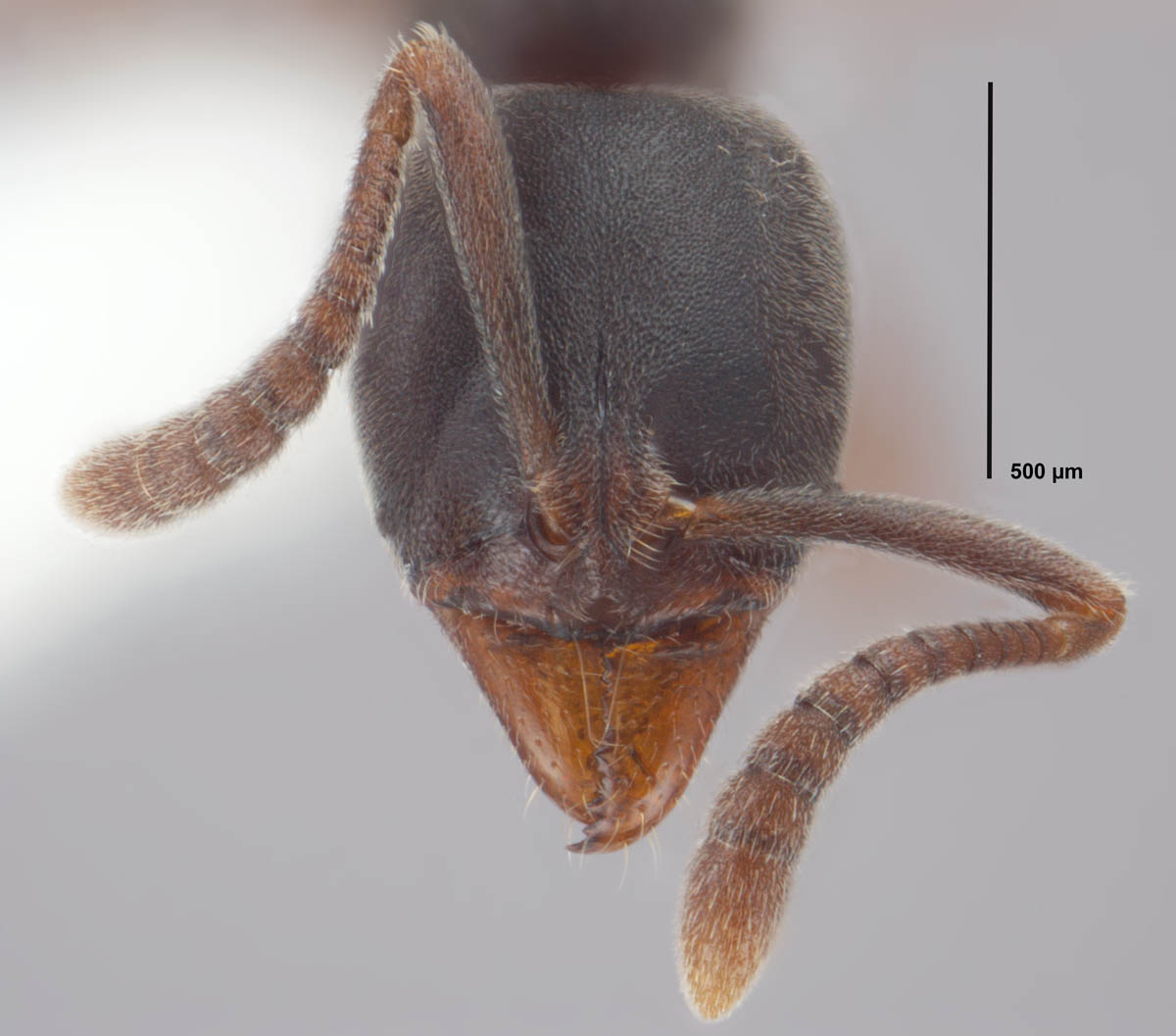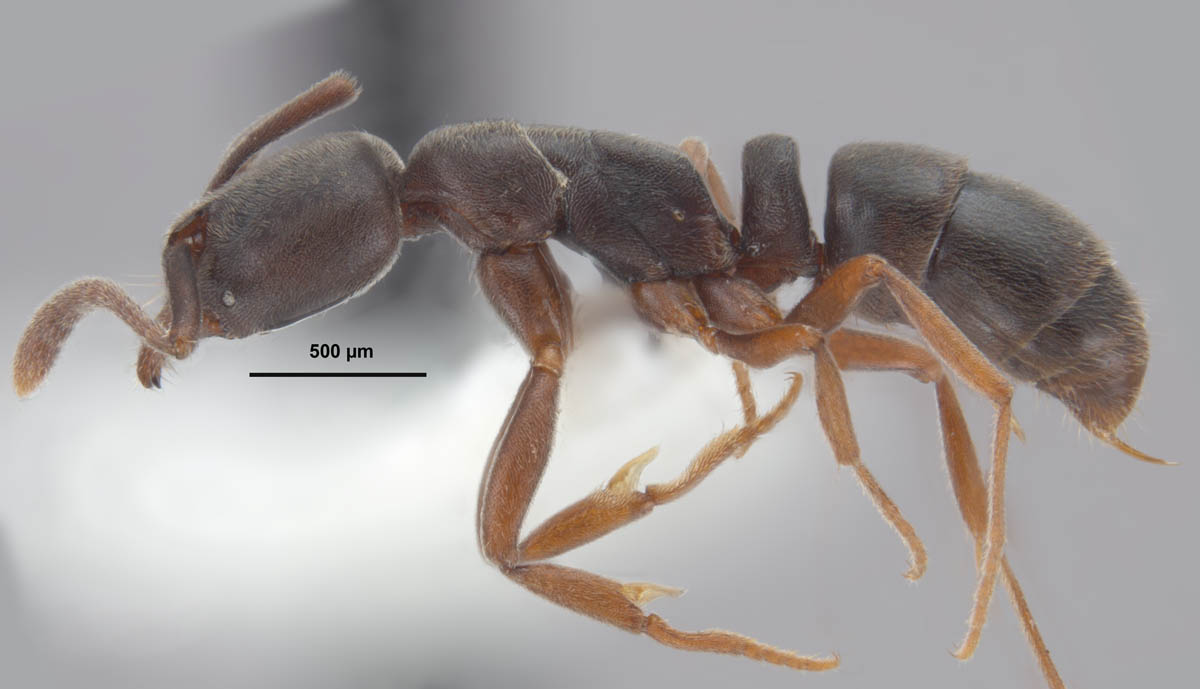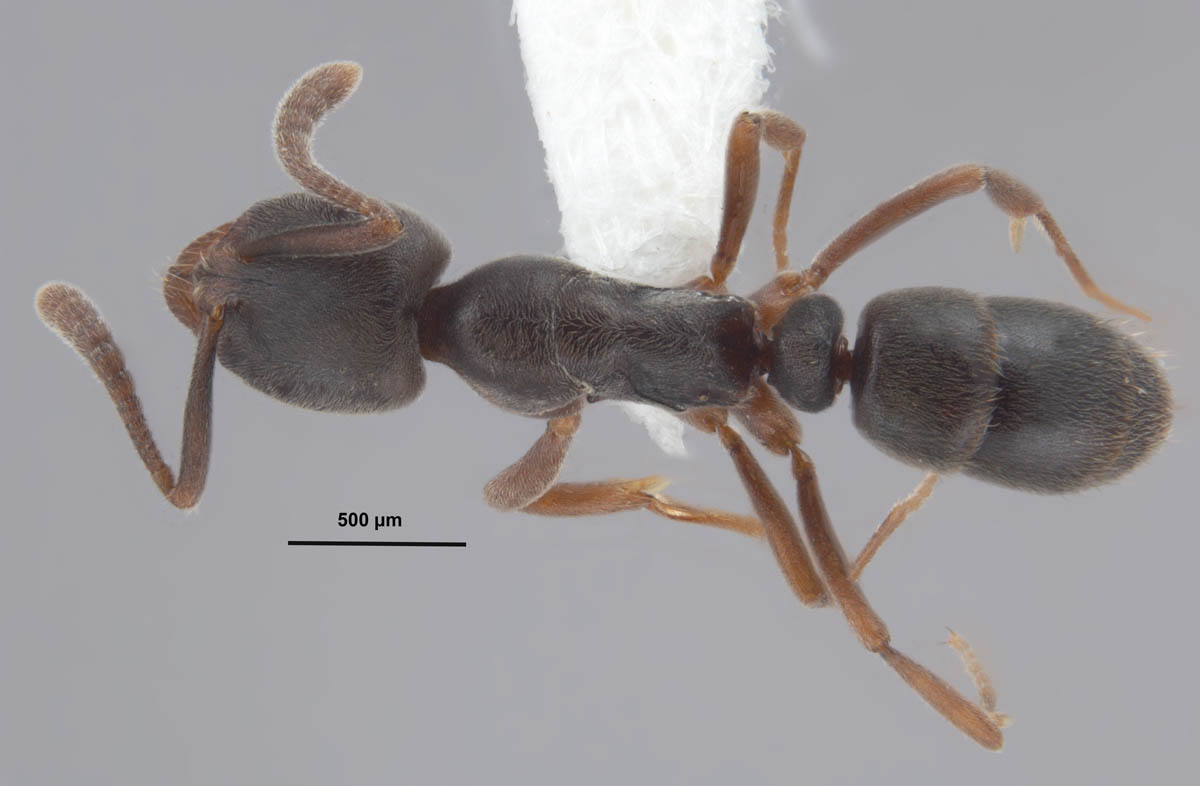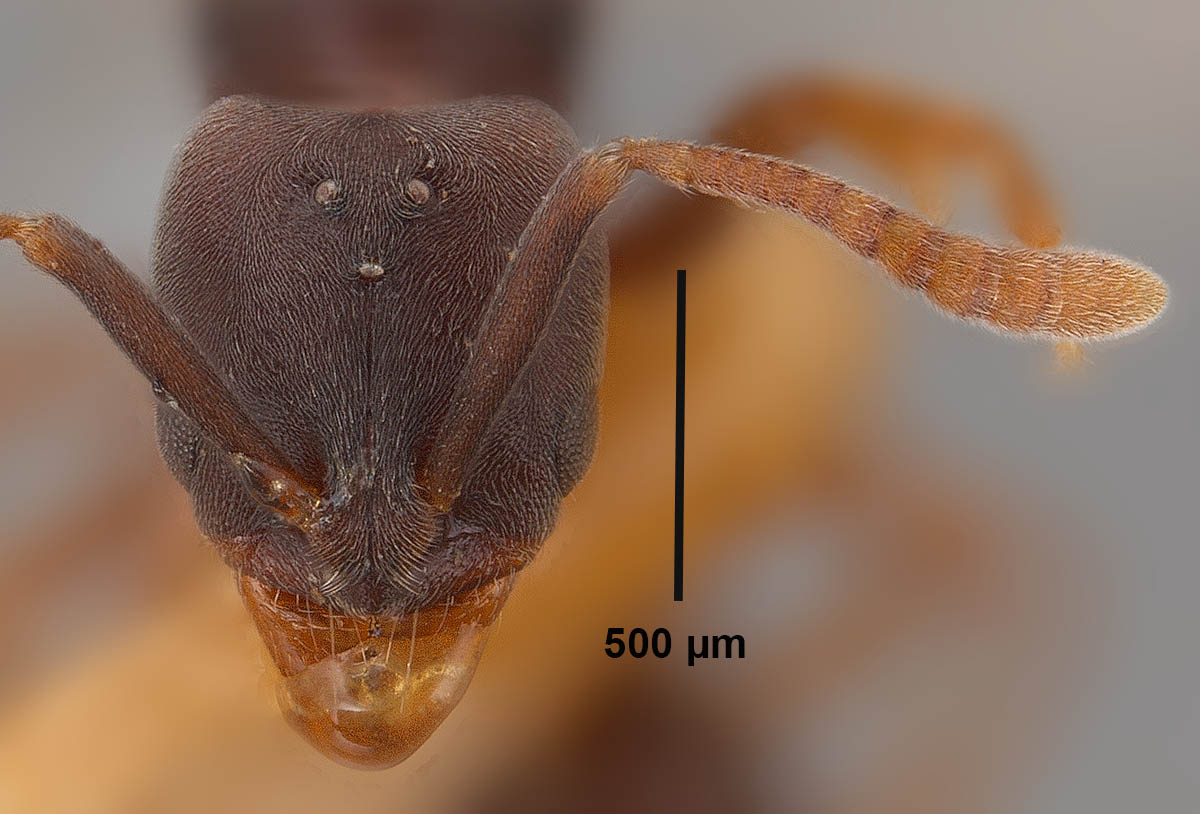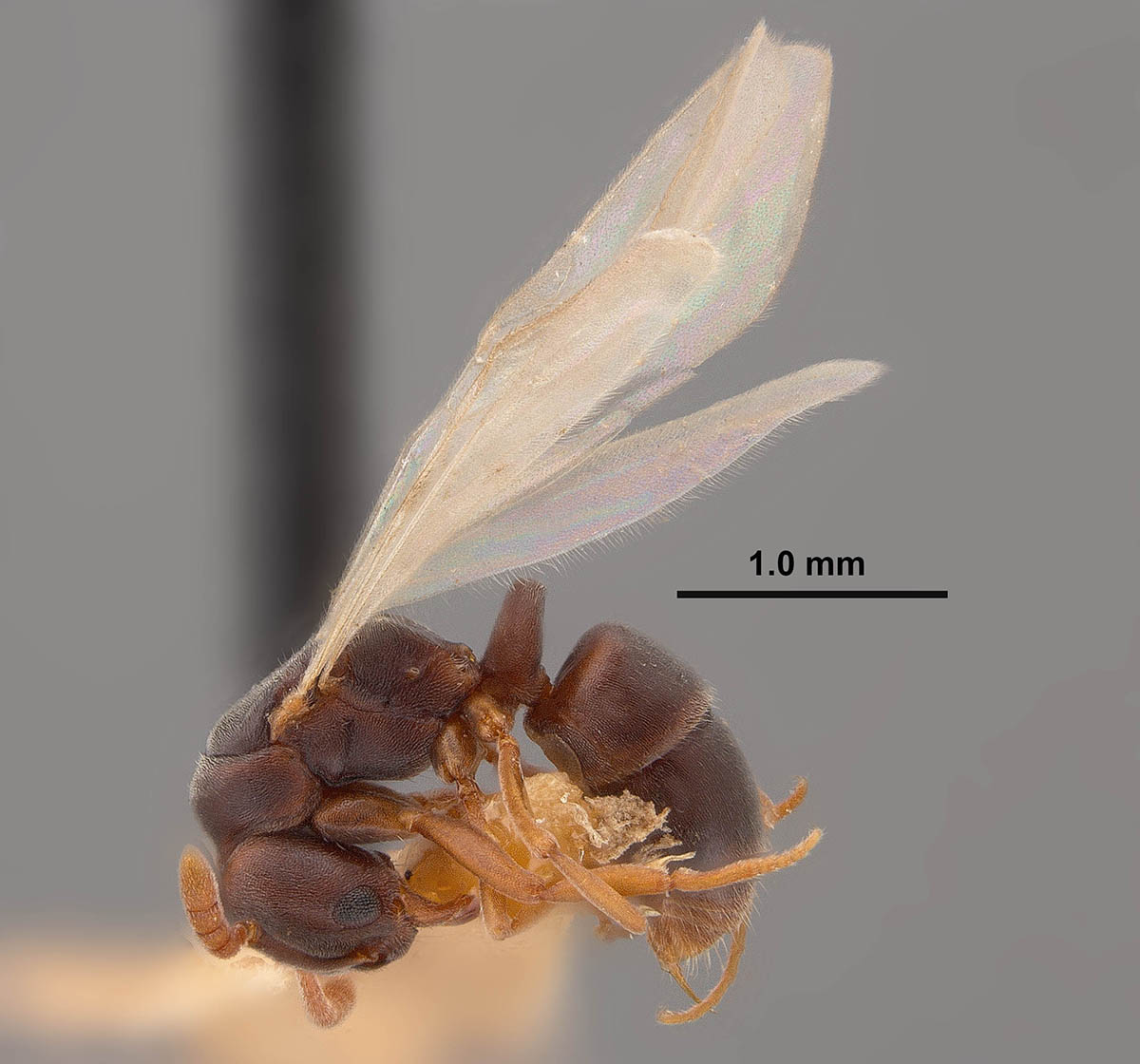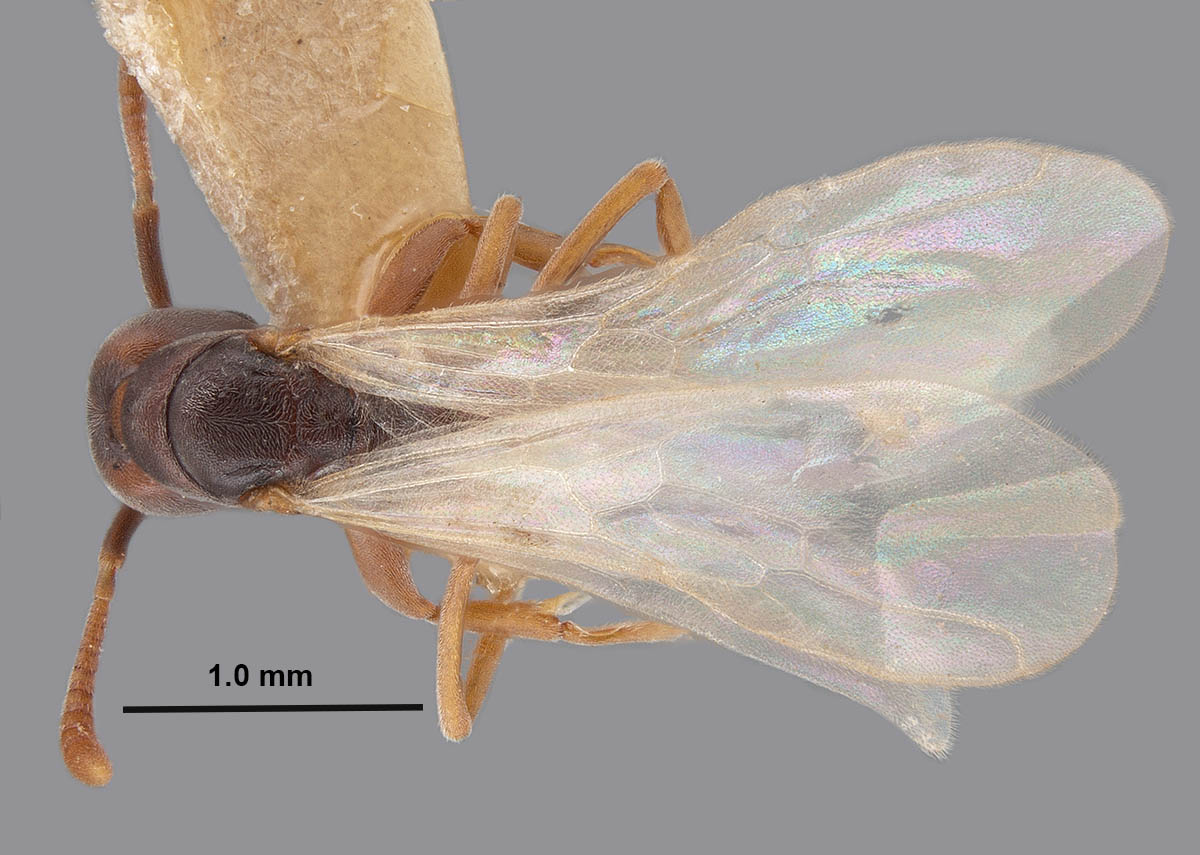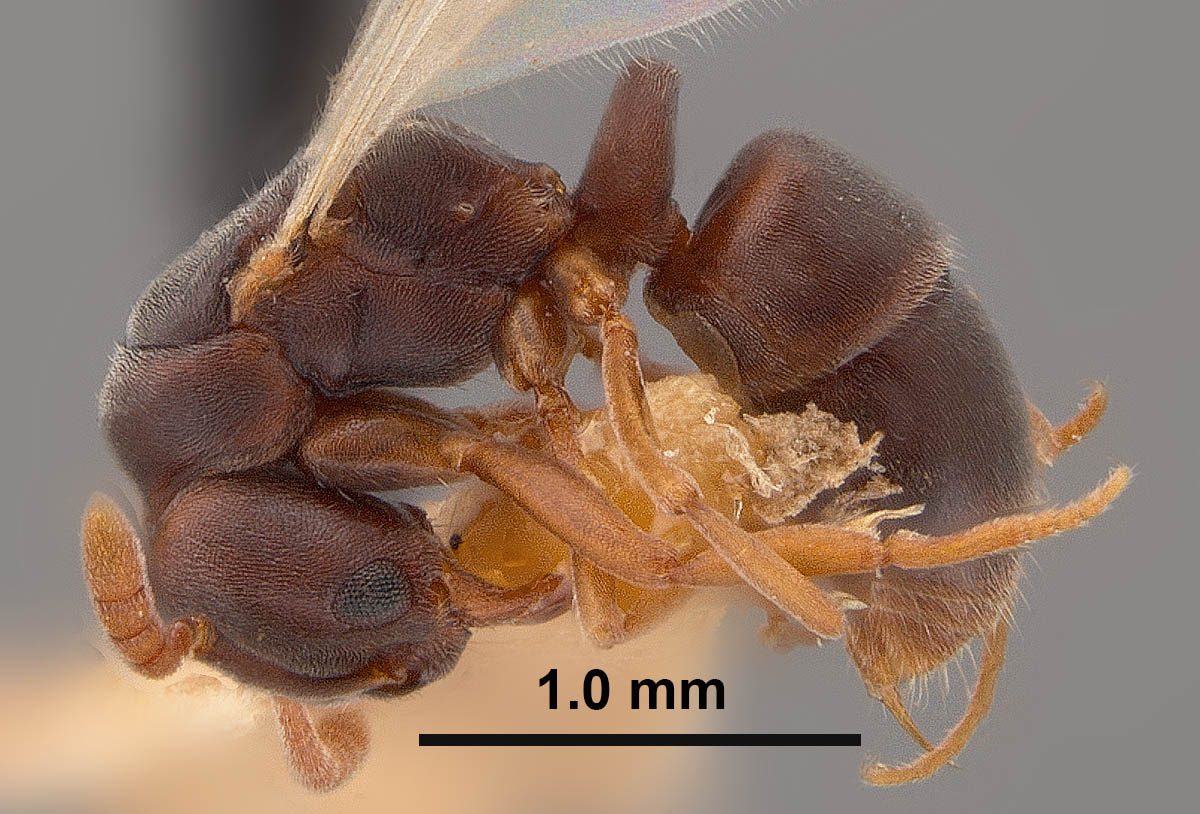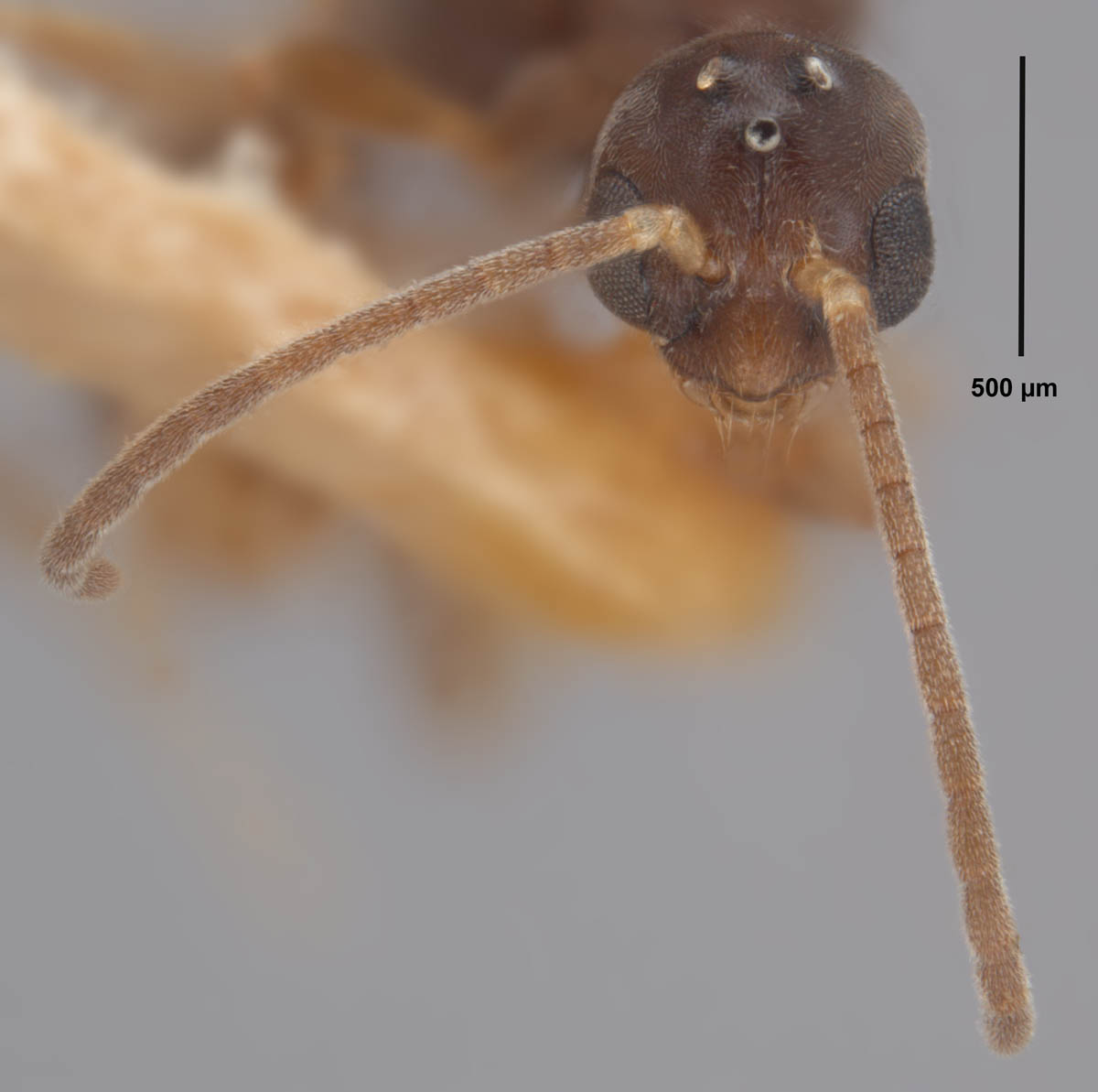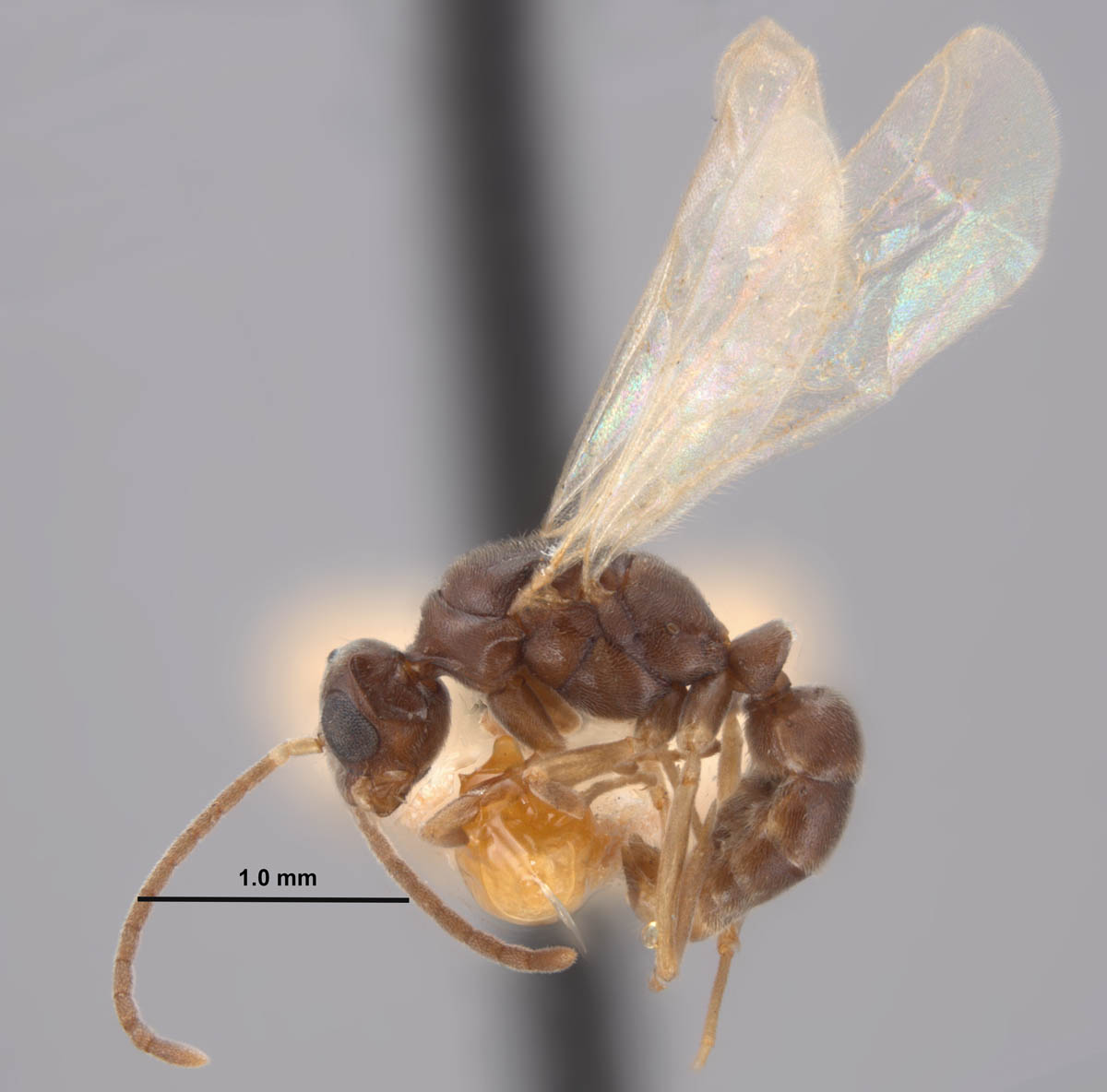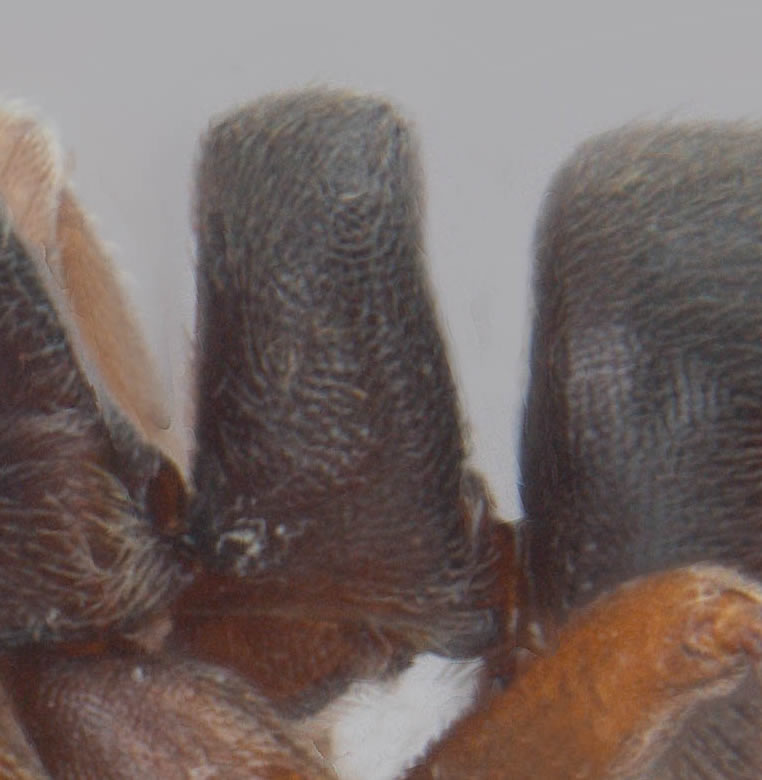Subfamily PONERINAE Authors: Joe A. MacGown and Ryan J. Whitehouse |
||
Hypoponera opaciceps, full face view of a worker (MS, Noxubee Co.) (photo by James G. Lewis and Joe A. MacGown) |
Hypoponera opaciceps, lateral view of a worker (MS, Noxubee Co.) (photo by James G. Lewis and Joe A. MacGown) |
Hypoponera opaciceps, dorsal view of a worker (MS, Noxubee Co.) (photo by James G. Lewis and Joe A. MacGown) |
Hypoponera opaciceps, full face view of a female (MS, Jackson Co.) (photo by Ryan J. Whitehouse and Joe A. MacGown) |
Hypoponera opaciceps, lateral view of a female (MS, Jackson Co.) (photo by Ryan J. Whitehouse and Joe A. MacGown) |
Hypoponera opaciceps, dorsal view of a female (MS, Jackson Co.) (photo by Ryan J. Whitehouse and Joe A. MacGown) |
Hypoponera opaciceps, lateral view of a female (MS, Jackson Co.) (photo by Ryan J. Whitehouse and Joe A. MacGown) |
Hypoponera opaciceps, full face view of a male (MS, Jackson Co. ) (photo by James G. Lewis and Joe A. MacGown) |
Hypoponera opaciceps, lateral view of a male (MS, Jackson Co. ) (photo by James G. Lewis and Joe A. MacGown) |
Hypoponera opaciceps, lateral view of a worker showing petiole (MS, Noxubee Co.) (photo by James G. Lewis and Joe A. MacGown) |
||
Introduction Hypoponera species can be identified by having a waist with only one distinct segment; gaster being narrowly connected to the waist; presence of a stinger; apex of gaster pointed downwards or posteriorly; frontal lobes covering base antennal insertion point; head and body relatively smooth; mandibles triangular; only one pectinate spur on hind tarsi; and subpetiolar process simple and not toothed. Hypoponera punctatissima (Roger) (Ponerinae) is small, yellowish brown stinging species thought to be native to Asia. In the US, this species does not appear to be widespread or common, except in Florida where it is an occasional nuisance pest. Hypoponera punctatissima is possibly one of the most widespread tramp ants in the world. Taxonomic History (Bolton 2016) Diagnosis Identification Queen: Small, slightly larger than workers (TL ≈ 3.7–4.0 mm, HL 0.82–0.86 mm, HW 0.72–0.76 mm, SL 0.64–0.68 mm, EL 0.18–0.20 mm, MeSL 1.16–1.28 mm) (n=5). Head and body reddish-brown to brownish black; legs, funiculus and mandibles reddish brown. Head longer than wide, rounded rectangular, with fine punctation and dense, short, appressed setae; frontal lobes prominent, covering antennal insertions; ocelli present; eyes large, located on anterior 1/3 of head; mandibles elongate triangular, outer borders more or less straight, apical tooth longest with numerous smaller teeth and denticles along inner borders; antenna 12-segmented, funiculus gradually becoming clavate apically. Mesosoma enlarged, blocky rectangular; pronotum somewhat rectangular in lateral view; mesopleural suture present; propodeal declivity strongly angled; entire mesosoma with fine punctation and dense appressed, short setae. Wings hyaline, veins and pterostigma light yellowish, each wing with a submarginal and discal cell. Waist with a single petiolar node; node slightly narrower apically than basally; subpetiolar process simple, rounded, lacking teeth or a fenestra (as in Ponera species). Gaster with first two segments elongate and about twice the size of the remaining segments or longer; first segment overlapping the second; entire gaster with dense, short setae and with longer, erect setae that become more conspicuous near apex; long, curved sting present. Male: Smaller than worker (TL ≈ 3.01–3.2 mm, HL 0.63–0.69 mm, HW 0.50–0.59 mm, SL 0.11–0.12 mm, EL 0.30–0.33 mm, MeSL 1.12–1.23 mm). (n=5). Head, body, coxae and funiculi (excluding pedicel) brown; scape, pedicel, and legs yellowish brown. Head circular, with dense, short, appressed setae; clypeus with three long medial setae projecting anteriorly; eye large, approximately half of the length of the head; three large ocelli medially present on the posterior apex of the head; mandibles reduced, edentate; antenna 13-segmented, filiform lacking club. Mesosoma enlarged, rounded convexly; pronotum rectangular; mesopleural suture present; propodeal declivity gently curved; entire mesosoma with dense appressed, short setae. Wings hyaline, veins and pterostigma light yellowish, each wing with a submarginal and discal cell. Waist with a single petiolar node; node rounded triangular, much wider basally than apically; subpetiolar process rounded. Gaster with first two segments elongate and about twice the size of the remaining segments or longer; entire gaster with dense, short setae and with longer, erect setae that become more conspicuous near apex; genitalia conspicuous, parameres large. Hypoponera opaciceps can be separated from similar species in the southeastern US by the presence of a simple, rounded subpetiolar process that lacks teeth, dark color and the petiole staying the same width throughout its height. Similar species include H. opacior, which differs by having the petiole (of workers) in profile gradually tapering apically; and Ponera pennsylvanica, which differs (in workers and queens) by the subpetiolar process with two distinct teeth posteriorly and with a circular fenestra present anteriorly. Other species of Hypoponera and Ponera in the Southeast are much smaller in size. Biology and Economic Importance Hypoponera opaciceps is considered an economically important species. It has spread across the Nearctic and Neotropical regions quite efficiently. Colonies can commonly be found in potted plants and soil and it is suspected that Florida’s plant nurseries have inadvertently aided in H. opaciceps spread. Soil ballasts used by ships taken from infested beaches probably also played a part in the spread of this species. This species is not aggressive, but has a sting, and may sting if disturbed. Pest Status Distribution Australian: American Samoa, Federated States of Micronesia, Fiji, French Polynesia, Hawaii, New Caledonia, New Guinea, Palau, Samoa, Tonga (AntWiki.org). U.S. Distribution: AL, AR, AZ, CA, CO, FL, GA, HI, LA, MS, NC, NM, SC, TX, UT, VA, WA (AntWeb.org and MEM). Acknowledgments Literature Cited Bolton, B. 2016. Bolton World Catalog Ants. Available online: http://www.antweb.org/world.jsp. Accessed 9 March 2016. Kempf, W. W. 1962. Miscellaneous studies on Neotropical ants. II. (Hymenoptera, Formicidae). Studia Entomologica 5:1-38. Mayr, G. 1887. Südamerikanische Formiciden. Verhandlungen der Kaiserlich-Königlichen Zoologisch-Botanischen Gesellschaft in Wien 37:511-632. Smith, M. R. 1929. Descriptions of five new North American ants, with biological notes. Annals of the Entomological Society of America 22: 543-551. Smith, M. R. 1936. Ants of the genus Ponera in America, north of Mexico. Annals of the Entomological Society of America 29:420-430. Wheeler, W. M. 1937. Mosaics and other anomalies among ants. Cambridge, Mass.: Harvard University Press, 95 pp. Wild, A. L. 2007. A catalogue of the ants of Paraguay (Hymenoptera: Formicidae). Zootaxa 1622:1-55. Wilson, E. O.; Taylor, R. W. 1967. The ants of Polynesia (Hymenoptera: Formicidae). Pacific Insects Monograph 14:1-109. |
||


